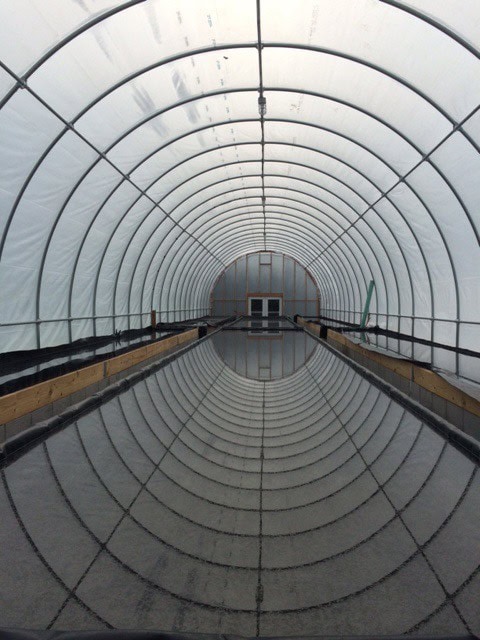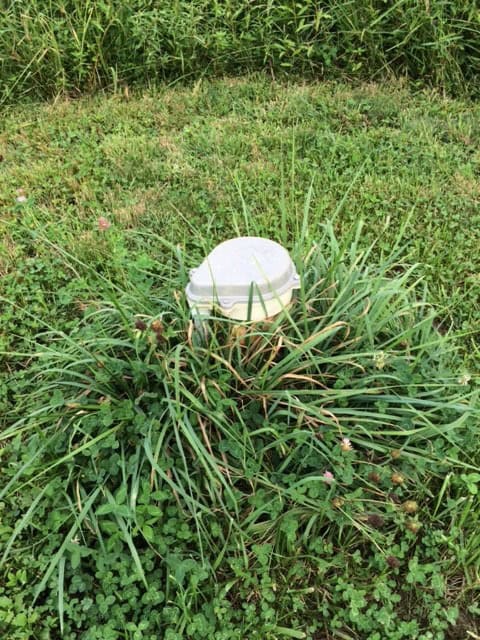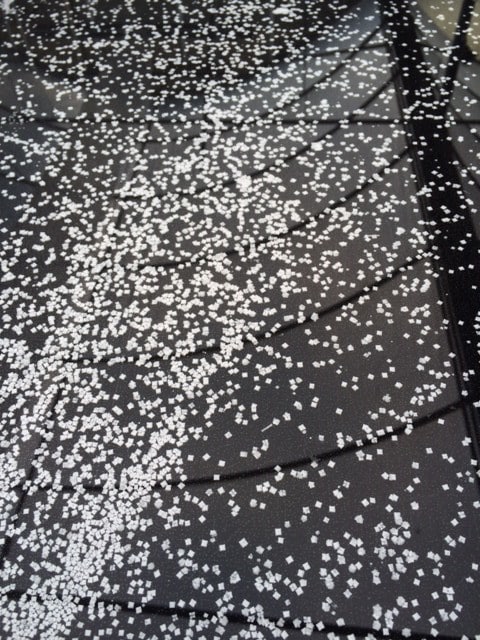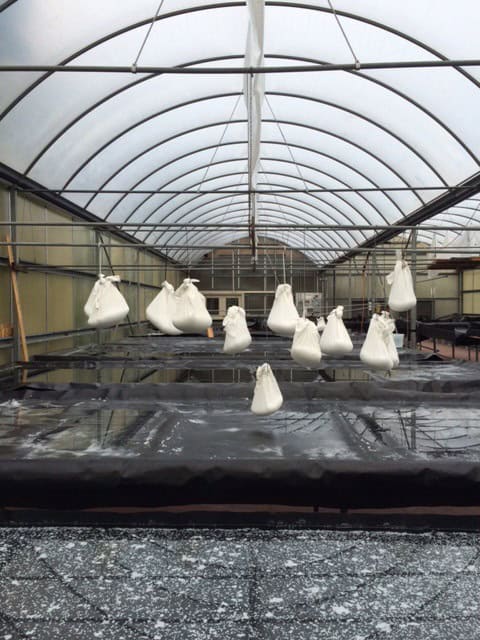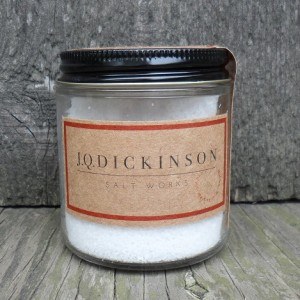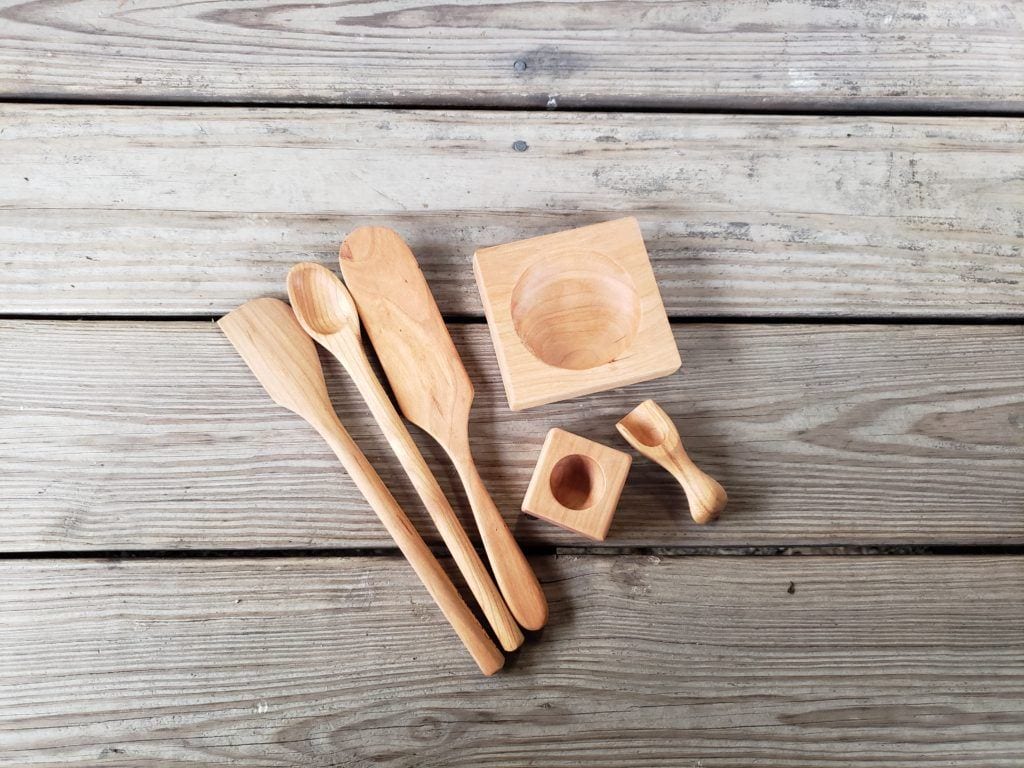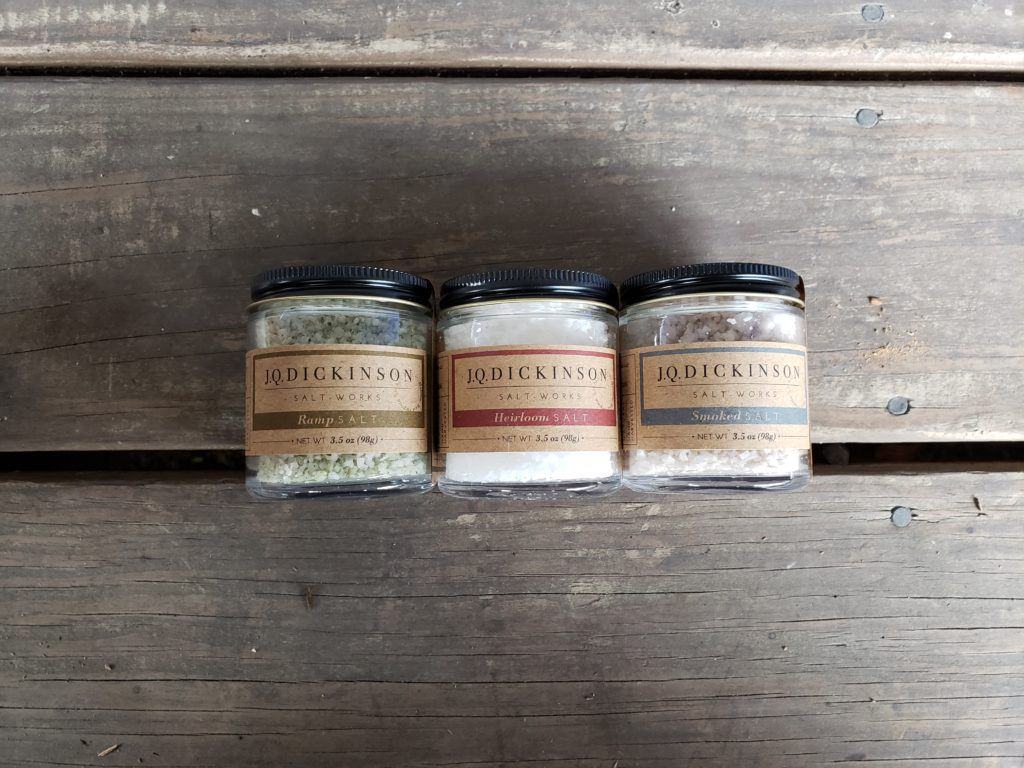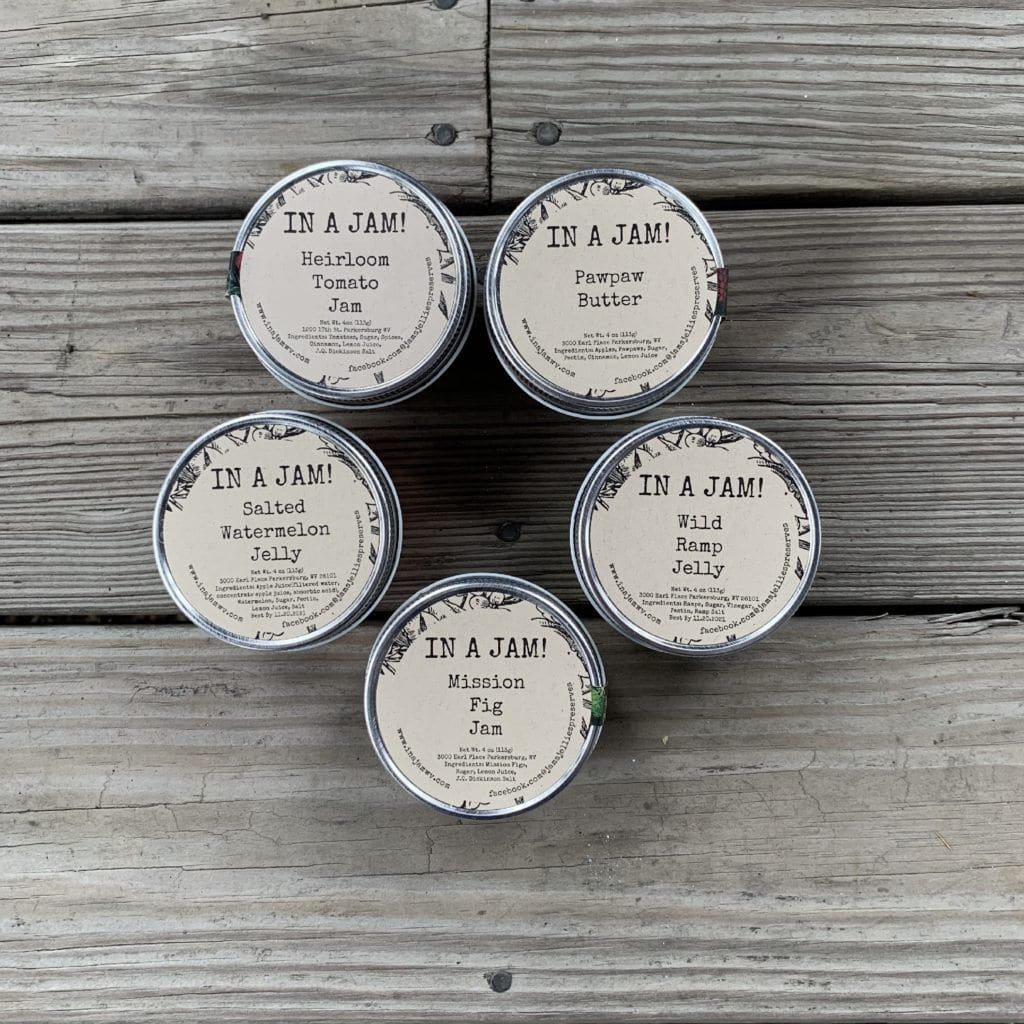Of all the ways we could make salt from our brine we chose slowest. This may seem odd at a time when faster is often considered better. We are the tortoise of the salt making world. Have you heard of the Slow Food movement? We embrace it with gusto.
Many salts, usually those from northern climates, are made by burning natural gas or electricity. Salts made in southern climates often form right on the ocean shore. Since we get quite a bit of rain in West Virginia, and we don’t have a coast line, we knew we couldn’t leave it totally exposed, but we didn’t want to use heat generated by fuels. We liked the idea of our salt forming naturally so we chose to use sun-houses, basically greenhouses. We do use a few fans to circulate the air but otherwise the brine is left to the whims of Mother Nature.
Our ancestors used timber, then coal, to stoke huge furnaces that evaporated the brine. They created enormous amounts of salt to supply the meat packers in Cincinnati in the early to mid-1800s. They cared less about taste and more about the preservative properties. Now, taste is more important than preservation. We developed our method to maximize mineral content, and give the salt a more complex, bold flavor.
Here’s how it works
The well: 350 feet deep, pumps brine to the surface from the ancient Iapetus Ocean.
This is our well head. (Not very impressive, is it!)
The tank: The brine is held here before we feed by gravity, through that big hose, into our sun-houses.
The sun-houses: The brine evaporates in these beds for about 2 weeks (depending on the weather) before we move it to another sun-house for crystallization.
The crystallization: In just a few days the clear, saturated brine begins to crystallize into perfect, white squares.
The harvest: Once enough salt forms and the crystals are the right size we harvest it with a special birch wood rake, made for us by a local artisan,
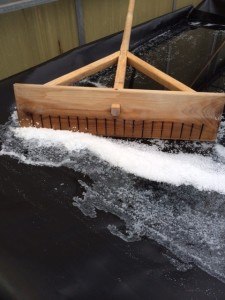
The drying: We drain the salt in cotton bags then press out the nigari, which is a liquid mineral by-product, used to make tofu and fresh cheese. It is also called bittern, which comes from its somewhat bitter taste. (Upcoming blog on this stuff)
The clean-sort-package process: We inspect it, sort the crystals by size, grind what is too big, and then package it in jars and bags.
This process takes about 4 weeks from brine to jar in the summer, and much longer in the winter.
Slow, but delicious, every time!


